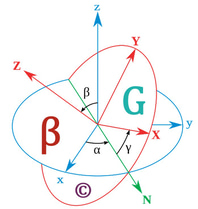Steps to a Successful Electrical Handover and Documentation: Ensuring a Smooth Transition
The completion of an electrical project is a significant milestone, but it’s not the end of the journey. The handover process—where the project is formally transferred from the contractor to the client—is a critical phase that ensures the electrical system is safe, functional, and ready for operation. Equally important is the documentation that accompanies the handover, providing a comprehensive record of the system’s design, installation, and testing. A well-executed handover and thorough documentation set the stage for efficient operation, maintenance, and future upgrades. This blog outlines the essential steps to achieve a successful electrical handover and documentation process.
ELECTRICAL ENGINEERINGPROJECT MANAGEMENTPOWER SYSTEMSENERGYINDUSTRIAL
Engr. Benjamin V. Gonzales Jr.
2/20/20253 min read
Why Handover and Documentation Matter
The handover and documentation process serves several key purposes:
Safety: Ensures the electrical system is installed and tested according to safety standards.
Functionality: Confirms that all systems operate as intended and meet the client’s requirements.
Accountability: Provides a clear record of responsibilities and deliverables.
Future Reference: Offers a detailed guide for maintenance, troubleshooting, and future modifications.
Key Steps to a Successful Electrical Handover
1. Pre-Handover Preparation
A successful handover begins long before the project is completed. Preparation involves:
Defining Requirements: Clearly outline the client’s expectations, including performance standards, testing protocols, and documentation needs.
Creating a Handover Plan: Develop a detailed plan that includes timelines, responsibilities, and deliverables.
Conducting Inspections: Perform preliminary inspections to identify and address any issues before the final handover.
2. Testing and Commissioning
Testing and commissioning are critical to ensuring the electrical system is safe and functional. Key activities include:
Functional Testing: Verify that all systems operate as intended under normal conditions.
Safety Testing: Conduct tests such as insulation resistance, earth grounding, and circuit breaker operation.
Performance Verification: Ensure the system meets design specifications and regulatory standards.
Issue Resolution: Address any problems identified during testing before proceeding with the handover.
3. Training the Client’s Team
The client’s team needs to understand how to operate and maintain the electrical system. Provide training on:
System Operation: How to start, stop, and monitor the system.
Safety Procedures: Emergency shutdowns, lockout/tagout, and hazard prevention.
Maintenance Practices: Routine checks, troubleshooting, and preventive maintenance.
Documentation Review: Explain the purpose and use of the handover documentation.
4. Compiling Handover Documentation
Comprehensive documentation is the cornerstone of a successful handover. Essential documents include:
As-Built Drawings: Updated drawings that reflect the final installation, including any changes made during construction.
Test Reports: Detailed records of all tests conducted, including results and compliance with standards.
Equipment Manuals: Manufacturer manuals for all installed equipment, including operation and maintenance guidelines.
Certificates of Compliance: Documentation proving the system meets regulatory and safety standards.
Warranty Information: Details of warranties for equipment and workmanship.
Maintenance Schedules: Recommended maintenance tasks and intervals.
5. Final Inspection and Walkthrough
A final inspection and walkthrough with the client ensure that all aspects of the project meet expectations. This step involves:
Visual Inspection: Check for proper installation, labeling, and cleanliness.
System Demonstration: Demonstrate the operation of key systems and components.
Client Feedback: Address any concerns or questions the client may have.
Sign-Off: Obtain formal approval and sign-off from the client to complete the handover.
6. Post-Handover Support
The handover doesn’t end with the client’s sign-off. Provide ongoing support to ensure a smooth transition:
Warranty Services: Honor warranty commitments and address any defects or issues.
Technical Assistance: Offer support for troubleshooting and operational challenges.
Follow-Up Visits: Conduct periodic visits to assess system performance and address any emerging issues.
Best Practices for Effective Documentation
Be Thorough: Include all relevant details, from design specifications to test results.
Organize Clearly: Use a logical structure and consistent formatting for easy navigation.
Use Visual Aids: Incorporate diagrams, photos, and charts to enhance understanding.
Keep It Accessible: Store documentation in both physical and digital formats for easy access.
Update Regularly: Ensure documentation is updated to reflect any changes or upgrades.
Common Challenges and Solutions
Incomplete Documentation
Challenge: Missing or incomplete documents can hinder system operation and maintenance.
Solution: Implement a documentation checklist and assign responsibility for compiling and reviewing documents.
Lack of Client Training
Challenge: Insufficient training can lead to operational errors and safety risks.
Solution: Develop a comprehensive training program tailored to the client’s needs.
Unresolved Issues
Challenge: Handing over a system with unresolved issues can damage trust and lead to disputes.
Solution: Address all issues during testing and commissioning before proceeding with the handover.
The Role of Technology in Handover and Documentation
Modern tools and technologies can streamline the handover and documentation process:
Digital Documentation: Use software to create, store, and share documents electronically.
Building Information Modeling (BIM): Leverage BIM for accurate as-built drawings and system visualization.
Mobile Apps: Use apps for real-time documentation updates and client communication.
Conclusion
A successful electrical handover and documentation process is essential for ensuring the safety, functionality, and longevity of an electrical system. By following a structured approach—preparing thoroughly, conducting rigorous testing, providing training, compiling comprehensive documentation, and offering post-handover support—you can deliver a project that meets the client’s expectations and sets the stage for efficient operation and maintenance.
Remember, the handover is not just a formality; it’s an opportunity to demonstrate professionalism, build trust, and leave a lasting positive impression. Invest the time and effort to get it right, and you’ll reap the rewards of a satisfied client and a well-functioning electrical system.





